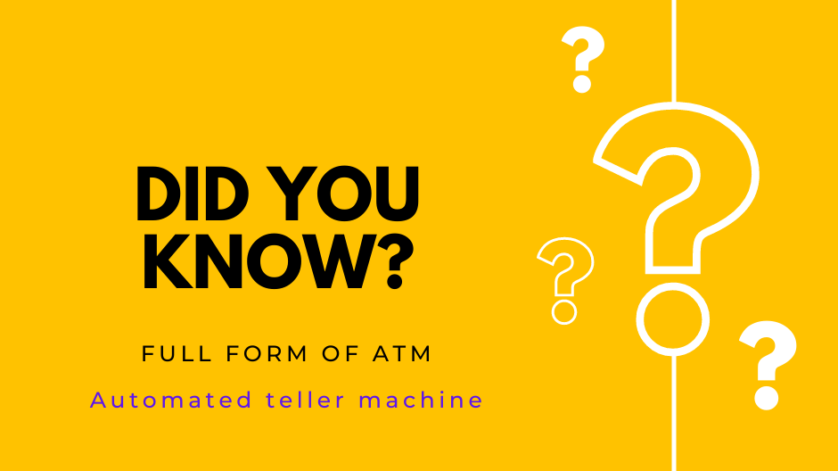ATM Full Form
An automated teller machine (ATM) is a device that allows customers of financial institutions to perform various transactions without the need for a bank teller or any human intervention. ATMs are widely used across the globe and have revolutionized the way we conduct financial transactions.
History of ATM
The first ATM was introduced in 1967 by Barclays Bank in the UK. Initially, ATMs were used only to dispense cash, but over time, the range of transactions that can be performed using an ATM has expanded to include depositing cash, transferring money, paying bills, and buying prepaid phone credit.
Working of an ATM
The working of an ATM is quite simple. A customer inserts their debit or credit card into the machine, enters their personal identification number (PIN), and selects the transaction they wish to perform. The machine connects to the customer’s bank or financial institution and carries out the transaction, which is then reflected in the customer’s account.
Benefits of using an ATM
The benefits of using an ATM are numerous. Firstly, ATMs offer convenience as they are available 24/7 and are often located in easily accessible places such as shopping malls, airports, and gas stations. Secondly, ATMs eliminate the need to stand in long queues at the bank, saving customers valuable time. Thirdly, ATMs provide an added layer of security as customers can withdraw money without the need for a bank teller, reducing the risk of robbery or theft.
However, there are also some risks associated with using an ATM. The most common risk is skimming, where criminals place a device on the ATM that captures the customer’s card information and PIN, allowing them to withdraw money from the customer’s account. Customers should be careful when using an ATM, always cover their PIN while entering it, and check the machine for any suspicious devices before using it.
In recent years, there have been several advancements in ATM technology. For example, some ATMs now have biometric sensors that can scan a customer’s fingerprint or iris, providing an added layer of security. Some ATMs also have contactless payment options, allowing customers to use their mobile phones or smartwatches to conduct transactions.
ATMs have revolutionized the way we conduct financial transactions. They offer convenience, speed, and security, making them a popular choice for customers of financial institutions. However, customers must also be vigilant when using an ATM and take precautions to protect their personal and financial information.

